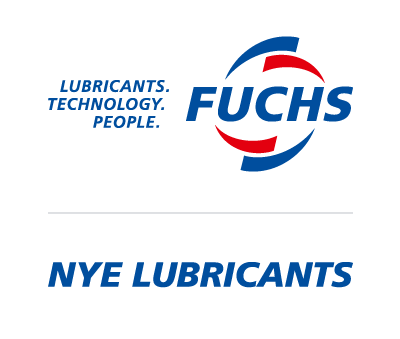Nye Lubricants, a Member of the FUCHS Group, has formulated high-quality, synthetic greases and oils for leaders in the space industry for more than 65 years.
Today, we continue to work with design engineers in the private, government, and military sectors to formulate new specialty lubricants that will take off with next-generation spacecraft. Launch vehicles, rovers, satellite constellations, and a host of applications involved in human travel and space exploration are just a few of the applications that require lubricants that can withstand the demanding operating conditions of space.
The durability and reliability of all space mechanisms, including lubrication, is critical to ensure the success of long-range missions. These missions will include exposure to ultra-high vacuum, radiation and temperature extremes, making higher performance and extended life lubricants a requirement for applications like gyroscopes, optics, reaction wheels, solar array drives, and more. In addition to extending component life lubricants can also increase load carrying ability, control motion, and reduce contamination. Nye’s lubricants are formulated specifically for space components including:
- Bearings
- Gears,
- Ball & Lead Screws
- Electrical Interconnects
What to Consider When Selecting a Space Lubricant
Lubricants for space mechanisms must be able to withstand extreme temperatures with minimal changes in viscosity. Nye’s PFPE lubricants can withstand temperatures from –90 °C to +250 °C while Nye’s multiply-alkylated cyclopentane (MAC) lubricants have an operating range of -50 °C to 125 °C. If a space application requires the low outgassing and excellent wear performance of a MAC lubricant and the operating temperature is below -50 °C, engineers may, and do, consider adding a heater to their design that raises the temperature into the operating temperature range of MACs.
Components in space mechanisms are now expected to offer extended reliability. As the ability to service or replace these components is limited or non-existent, lubricants must be able to protect components for the entirety of their intended life. We offer ‘Lube-for-Life’ lubricants, meaning that they have long-life performance to ensure reliability and mission success for the entirety of your mission.
Lubricants with good film strength are recommended for space applications and ensure moving parts are coated to minimize contact and friction. MAC lubricants are known for resisting wear-related break down to protect components under heavy loads.
Outgassing is akin to evaporation; it is the release of smaller fractional molecules from a bulk liquid or solid material. Evaporation losses accelerate when operating in vacuum and compromise a lubricant's integrity over time. Lubricants with lower outgassing have a lower material loss and ensure longer-lasting lubrication.
Outgassed molecules can also condense on surfaces and adversely affect the optical or surface properties of the material onto which it condenses. Optical components including sensors, lenses, and solar cells are an example of applications where outgassing condensation can compromise mission performance. Lubricant outgassing is measured in total mass loss (TML) and collected volatile condensable materials (CVCM) per ASTM E595. Nye’s lubricants are tested to this standard and fall well below the acceptable outgassing limits determined by the space industry.
The term dynamic particle generation describes what happens when contaminants are created by being forced or expelled from a lubricated ball-screw, bearing, or gear system into the operating environment. These contaminants could include base oil constituents, thickener particles, additives, etc. and are freed from the grease through dynamic mechanical action whether it be rolling, sliding, or a combination of both. Nye application engineers developed a proprietary test method and apparatus that allows us to measure and quantify particle generation under these dynamic conditions.
Space Lubricants
Nye space oils and greases are formulated using two different base oils: Perfluoropolyethers (PFPE) and multiply-alkylated cyclopentane (MAC), each offering specific benefits.
Unlike other lubricants on the market, multiply-alkylated cyclopentane (MAC) lubricants are the only greases and oils that offer the unique combination of extreme wear protection, low outgassing, and additive compatibility for optimal performance in space applications. If your application requires low outgassing and an extremely wide operating temperature range but does not require the extreme wear performance or specialized additives of a MAC lubricant, a Perfluoropolyether (PFPE) from our NyeTorr® or NyeClean® product line is recommended.
Nye has developed PFPE lubricants using the most advanced technology available, like NyeTorr® 6350EL, which offers significantly improved load-carrying ability and much longer operating life versus heritage PFPE technology.
| Product | Chemistry | Temp Range | Vacuum Stability (wt. %) | Vapor Pressure (@ 25°C) |
|---|---|---|---|---|
| RHEOLUBE 1000 | Cyclopentane/ Sodium Soap | 50 to 125 °C | TML= 2.307 CVCM = 0.635 | 1.79 x 10-11 Torr |
| RHEOLUBE 1000-3PB | Cyclopentane/ Sodium Soap | -50 to 125 °C | TML = 1.82 CVCM = 0.208 | 1.02 x 10-9 Torr |
| FLUOROCARBON GEL 1000F | Cyclopentane/ PTFE | -50 to 150 °C | TML = 1.587 CVCM = 0.401 | - |
| RHEOLUBE 2000 | Cyclopentane/ Sodium Soap | -45 to 125 °C | TML = 2.461 CVCM = 0.729 | 1.79 x 10-10 Torr |
| RHEOLUBE 2000B | Cyclopentane/ Sodium Soap | -45 to 125 °C | TML = 2.117 CVCM = 0.647 | 8.18 x 10-12 Torr |
| RHEOLUBE 2004 | Cyclopentane/ Sodium Soap | -45 to 125 °C | TML = 1.873 CVCM = 0.104 | 8.46 x 10-10 Torr |
| RHEOLUBE 2004LO | Cyclopentane/ Sodium Soap | -45 to 125 °C | TML = 0.772 CVCM = 0.268 | 2.45 x 10-10 Torr |
| NYETORR 6200 | Cyclopentane/ PTFE | -45 to 150 °C | TML = 0.058 CVCM = 0.025 | 2.44 x 10-11 Torr |
| NYETORR 6300 | PFPE/ PTFE | -65 to 250 °C | TML = 0.036 CVCM = 0.006 | 2.79 x 10-12 Torr |
| NYETORR 6350EL | PFPE/ PTFE | -80 to 250 °C | TML = 0.06 CVCM = 0.008 | 5.76 x 10-12 Torr |
| Product | Chemistry | Temp Range | Vacuum Stability (wt. %) | Vapor Pressure (@ 25°C) |
|---|---|---|---|---|
| SYNTHETIC OIL 1001 | Cyclopentane | -50 to 125 °C | TML= 2.23 CVCM = 1.064 | 5.49 x 10-11 Torr |
| SYNTHETIC OIL 1001A | Cyclopentane | -50 to 150 °C | TML =0.25 CVCM=0.242 | 1.27 x 10-11 Torr |
| SYNTHETIC OIL 2001 | Cyclopentane | -45 to 125 °C | TML= 1.39 CVCM= 0.700 | 1.88 x 10-10 Torr |
| SYNTHETIC OIL 2001A | Cyclopentane | -45 to 125 °C | TML=0.12 CVCM= 0.013 | 4.50 x 10-11 Torr |
| SYNTHETIC OIL 2001B | Cyclopentane | -45 to 125 °C | TML = 0.94 CVCM = 0.574 | 8.18 x 10-12 Torr |
| SYNTHETIC OIL 2001A-3PB | Cyclopentane | -45 to 125 °C | TML=0.33 CVCM=0.293 | 1.27 x 10-10 Torr |
| NYETORR 6201 | Cyclopentane | -45 to 150 °C | TML=0.11 CVCM=0.010 | 6.91 x 10-11 Torr |
| NYETORR 6301 | PFPE | -75 to 250 °C | TML=0.00 CVCM=0.002 | 2.79 x 10-12 Torr |
| NYETORR 6351 | PFPE | -65 to 250 °C | TML=0.00 CVCM=0.000 | 4.43 x 10-13 Torr |

